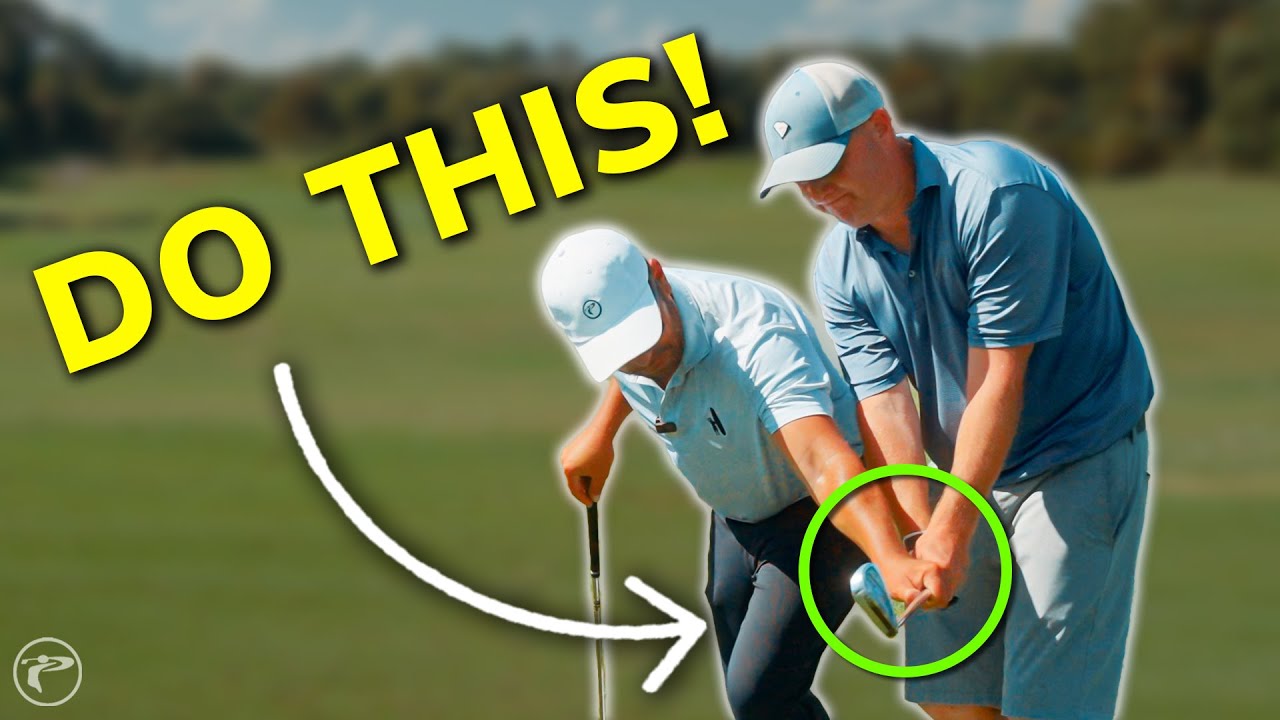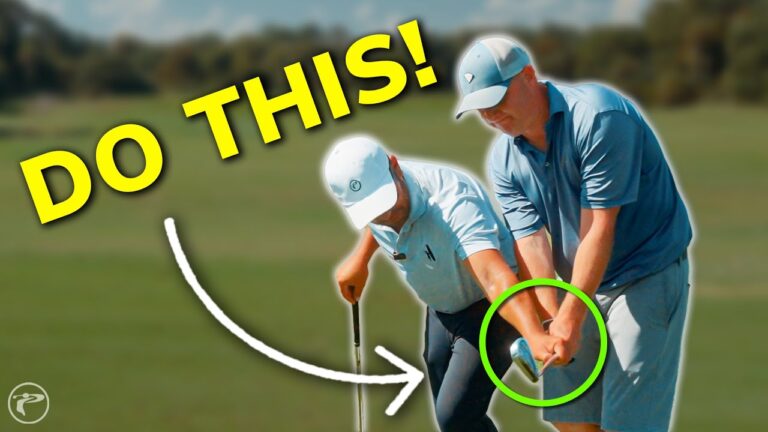
Elevate your golf game with a refined takeaway technique that enhances precision, power, and timing. Discover how this small change can significantly improve your swing.
The golf swing is a complex motion that combines precision, power, and timing. One small adjustment can often unlock a whole new level of consistency and distance. If you’ve ever struggled with your takeaway or felt your swing getting “off plane,” there’s a simple yet powerful move that can transform your entire swing. This article will guide you step-by-step through mastering this crucial takeaway move, helping you build better leverage, maintain control, and ultimately hit better golf shots.
Whether you’re a beginner looking to develop a reliable swing or an experienced player seeking more consistency, understanding and implementing this takeaway technique can make a huge difference. Let’s dive in and break down exactly what this move is, why it works, and how you can practice it effectively.
Table of Contents
- Step 1: Understand the Importance of Your Hand Position in the Takeaway
- Step 2: Position Your Arms on the Shoulder Plane
- Step 3: Feel the Downward Pressure in Your Grip
- Step 4: Keep Your Hands In Front of the Clubface
- Step 5: Avoid Raising Your Hands Too Early
- Step 6: Master the “Ten and Ten” Feeling
- Step 7: Rehearse the Takeaway Move Consistently
- Step 8: Stay Centered and Avoid Lateral Upper Body Movement
- Step 9: Understand the Role of Club Momentum
- Step 10: Integrate the Takeaway Move into Your Full Swing
- Frequently Asked Questions (FAQ)
- Conclusion
Step 1: Understand the Importance of Your Hand Position in the Takeaway
At the core of this takeaway move is the position of your hands as you start the backswing. The minute your hands get too high or too far away from your body, you lose leverage, and the club begins to roll prematurely. This rolling action can throw off your clubface alignment and cause inconsistent ball striking.
Imagine holding the club with your hands positioned ‘ten and ten’—this means your hands are roughly at the 10 o’clock position on the grip, with the clubface aligned accordingly. This position helps maintain proper leverage and prevents the club from rolling too early. The hands should not be too high or too low but controlled and positioned so that you feel downward pressure through your grip.
Key takeaway: Keep your hands at a controlled height and close to your body to preserve leverage and prevent early rotation of the clubface.
Step 2: Position Your Arms on the Shoulder Plane
Another vital aspect of this move is where your arms sit during the takeaway. Often, golfers have their arms either too low or too far underneath the shoulder plane, which can cause an inefficient swing path. The goal is to get your arms up on the shoulder plane, positioning them so the club’s momentum feels natural and balanced.
When your arms are in the correct position, the clubhead’s momentum becomes more vertical, moving smoothly up an imaginary wall rather than out and around your body. This ‘wall’ analogy helps visualize the correct swing path and prevents the club from swinging too far inside or outside.
Tip: As you take the club back, feel your arms rising slightly so they align with your shoulder plane. This adjustment will help maintain a consistent swing plane and make it easier to return the club to the ball squarely.
Step 3: Feel the Downward Pressure in Your Grip
One subtle but powerful feeling to develop is the downward pressure through your hands as you start the takeaway. This pressure gives you a sense of control and connection with the club, helping you maintain the correct wrist angles and leverage.
Try to feel as if you’re ‘owning’ the grip, applying just enough pressure to keep the clubhead stable without gripping too tightly. This balance allows you to maintain the clubface’s position during the backswing and prepares you to release the club naturally in the downswing.
When you master this feeling, it becomes easier to avoid ‘flipping’ your wrists or allowing the clubface to open or close prematurely, both of which can cause errant shots.
Step 4: Keep Your Hands In Front of the Clubface
A common mistake is allowing the hands to drift too far behind or above the clubhead during the takeaway. Instead, the hands should lead the clubhead, staying in front and slightly lower, creating a clear ‘hands in front of club’ feeling.
This hand position helps create the proper lag and prevents the club from getting ‘underneath’ your hands, which can cause a loss of power and control. When your hands lead the club, the clubface stays square, and you’ll notice a smoother, more powerful transition into the downswing.
Practice drill: Without hitting a ball, rehearse your takeaway by moving the club so that your hands stay slightly ahead of the clubhead, and the club points out in front of your hands. This drill will help ingrain the correct takeaway path into your muscle memory.
Step 5: Avoid Raising Your Hands Too Early
Many golfers unintentionally raise their hands too high during the takeaway, which decreases leverage and causes the club to roll prematurely. This early hand raise often leads to an ‘over the top’ swing path and inconsistent contact.
The key is to keep your hands lower and more connected to your body during the initial takeaway. This position preserves the angle between your wrists and the club shaft, allowing you to ‘set’ the club correctly at the top of your backswing.
Remember: The goal is not to keep your hands too low or too flat but to find a balanced position where your hands move back smoothly and stay connected to the club without rolling or flipping.
Step 6: Master the ‘Ten and Ten’ Feeling
The ‘ten and ten’ concept is a helpful mental cue to guide your takeaway. Imagine your hands positioned at the 10 o’clock position on the grip, with the clubface angled correspondingly. This feeling encourages the correct hand height and clubface alignment during the takeaway.
By focusing on this position, you’ll naturally avoid raising your hands too high or letting the clubface roll open or closed. It’s a simple but effective way to keep your takeaway on plane and set up a solid backswing.
Tip: Practice this move slowly in front of a mirror or with video feedback to ensure your hands and clubface are in the correct position at the takeaway.
Step 7: Rehearse the Takeaway Move Consistently
Consistency is the secret to improvement in golf. Once you understand the takeaway move, it’s important to rehearse it regularly to build muscle memory.
Start with slow, deliberate swings focusing on hand position, arm plane, and grip pressure. Feel the downward pressure in your hands and keep your hands leading the clubhead. Visualize the ‘ten and ten’ position and keep your arms on the shoulder plane.
As you become comfortable, gradually increase the speed while maintaining the correct positions. This rehearsal will help you develop a reliable takeaway that sets up the rest of your swing for success.
Step 8: Stay Centered and Avoid Lateral Upper Body Movement
Another important factor to complement your takeaway is maintaining a centered upper body during the swing. Many golfers tend to ‘rock’ or shift laterally in transition, which causes the upper body to move ahead of the ball. This early movement can throw off your swing path and timing, leading to inconsistent contact.
Focus on keeping your hips and chest aligned and stable throughout the swing. Staying ‘on the back of the ball’ allows for a natural release of the club and helps maintain the correct swing plane.
Practice tip: Use alignment sticks or mirrors to monitor your upper body movement during practice swings. Aim to keep your center of gravity steady and avoid excessive lateral shifts.
Step 9: Understand the Role of Club Momentum
Momentum plays a big role in how your takeaway and overall swing feel. When your hands and arms are in the right position on the shoulder plane, the clubhead’s momentum becomes more vertical and controlled. This helps you swing ‘up the wall’ rather than ‘up the escalator,’ keeping the club on a more efficient path.
Proper momentum allows you to turn deeper and make a more powerful backswing without compromising control. This dynamic feeling is what separates a smooth, repeatable swing from a rushed or inconsistent one.
Step 10: Integrate the Takeaway Move into Your Full Swing
Once you’ve mastered the takeaway move, it’s time to integrate it into your full swing. Remember, the takeaway sets the foundation for everything that follows, including the backswing, downswing, and release.
By keeping your hands in the ‘ten and ten’ position, your arms on the shoulder plane, and maintaining proper grip pressure and momentum, you’ll create a swing that naturally releases the club and produces consistent strikes.
Focus on staying centered, avoiding lateral upper body movement, and rehearsing your takeaway regularly. Over time, this will translate into better ball flight, more distance, and greater confidence on the course.
Frequently Asked Questions (FAQ)
Why is hand position so important in the takeaway?
Your hand position controls the clubface angle and the leverage you maintain throughout the swing. If your hands get too high or too far from your body, the clubface can roll prematurely, causing inconsistent shots and loss of power.
What does the ‘ten and ten’ position mean?
‘Ten and ten’ refers to the ideal hand position during the takeaway, where your hands are around the 10 o’clock position on the grip, with the clubface aligned accordingly. This position helps maintain control and leverage through the swing.
How can I feel the downward pressure in my grip?
Hold the club firmly but not tightly, imagining you are applying a slight downward pressure through your hands. This feeling helps you maintain control of the clubface and prevents flipping or rolling during the swing.
What should I do if my hands tend to rise too early in the takeaway?
Focus on keeping your hands connected to your body and slightly lower during the initial takeaway. Practicing the ‘ten and ten’ position and feeling the downward pressure can help prevent early hand raising.
How does staying centered affect my swing?
Maintaining a centered upper body prevents early lateral movement that can throw off your swing path and timing. Staying behind the ball allows for a natural release and better contact consistency.
Can this takeaway move help me hit the ball farther?
Yes! By preserving leverage and maintaining the correct swing plane, you can generate more power and speed through impact, which often translates to increased distance.
How often should I practice this takeaway move?
Regular practice is essential. Start by rehearsing the move slowly and deliberately, gradually increasing speed as you build confidence. Incorporate it into your full swing practice sessions and warm-ups to ingrain the motion.
Conclusion
Changing your takeaway might seem like a small adjustment, but it has the power to revolutionize your entire golf swing. By focusing on the ‘ten and ten’ hand position, keeping your arms on the shoulder plane, feeling the right grip pressure, and staying centered, you’ll create a more consistent, powerful, and effective swing.
This takeaway move helps maintain proper leverage, prevents early clubface rolling, and sets you up for a natural, effortless release. With consistent practice and attention to detail, you’ll notice your ball striking improve and your confidence soar on the course.
Remember, the key to better golf is simplicity and repetition. Master this takeaway move, and watch your swing—and your scores—transform for the better!


0 Comments